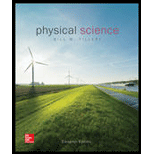
Concept explainers
The Fahrenheit thermometer scale is
a. more accurate than the Celsius scale.
b. less accurate than the Celsius scale.
c. sometimes more or less accurate, depending on the air temperature.
d. no more accurate than the Celsius scale.
The accuracy of Fahrenheit thermometer scale in comparision to Celsius scale, from the following options.
More accurate than the Celsius scale.
Less accurate than the Celsius scale.
Sometimes more or less accurate, depending on the air temperature.
No more accurate than the Celsius scale.
Answer to Problem 1AC
Solution:
Option (d) is correct.
Explanation of Solution
Introduction:
Temperature scales are the devices used to find the temperature of the systems or surroundings in thermodynamics. There aredifferent types of scales like Fahrenheit scale, Celsius scale and Kelvin scale.
Explanation:
Reason for the correct options:
The Fahrenheit scale is just as valid asCelsius scale to measure the temperature as the Celsius scale gives their well-defined units. It is because working fluid in both the scales are liquid.
Therefore, option (d) is correct.
Reason for the incorrect options:
In the Fahrenheit scale and Celsius scale, working fluid is same therefore, there isn’t any difference.
Therefore, option (a) and option (b) are incorrect.
The accuracy of Fahrenheit scale does not change with air temperature. Even it is usually used to measure air temperature as well.
Therefore, option (c) is incorrect.
Conclusion:
The Fahrenheit thermometer scale is no more accurate than the Celsius scale.
Want to see more full solutions like this?
Chapter 4 Solutions
Physical Science
- em>. The volume of an ideal gas enclosed in a thin, elastic membrane in a room at sea level where the air temperature is 18°C is 8 10-3 m3 .If the temperature of the room is increased by 10°C, what is the new volume of the gas?arrow_forwardWhat is the relative humidity on a 25.0C day when the air contains 18.0g/m3 of water vapor?arrow_forwardIn cold weather, you can sometimes "see" your breath. What you are seeing is a mist of small water droplets, the same as in clouds and fog. Suppose air leaves your mouth with temperature 35°C and humidity 0.035 kg/m3 and mixes with an equal amount of air at 5°C. and humidity 0.005 kg/m3 What is the relative humidity of the mixed air if its temperature and humidity equal the averages of those of the two original air masses? Represent what happens by plotting three points in a graph like Figure 5.34.arrow_forward
- Give an example of a physical property that varies with temperature and describe how it is used to measure temperature.arrow_forwardIn winters, if is often warmer in San Francisco than in nearby Sacramento, 150 km inland. In summers, it is nearly always hotter in Sacramento. Explain how the bodies of water surrounding San Francisco moderate its extreme temperatures.arrow_forwardWhat is the density of water vapor in g/m3 on a hot dry day in me desert when the temperature is 40.0C and the relative humidity 15 6.00%?arrow_forward
- The Surface temperature of the Sun is about 5750 K. What is this temperature on the Fahrenheit scale?arrow_forwardFrost damage to most plants occurs at temperatures of 28.0F or lower. What is this temperature on the Kelvin scale?arrow_forwardOn a nice winter day at the South Pole, the temperature rises to 60°F. What is the approximate temperature in degrees Celsius?arrow_forward
- One of the honest temperatures ever recorded on the surface at Earth was 134F in Death Valley, CA. What is this temperature in Celsius degrees? What is this temperature in Kelvin?arrow_forwardOne easy way to reduce heating (and cooling) costs is to add extra insulation in the attic of a house. Suppose the house already had 15 cm of fiberglass insulation in the attic and in all the exterior surfaces. If you added an extra 8.0 cm of fiberglass to the attic, then by what percentage would the heating cost of the house drop? Take the single story house to be of dimensions 10 m by 15 m by 3.0 m. Ignore air infiltration and heat loss through windows and doors.arrow_forwardWhen a cold alcohol thermometer is placed in a hot liquid, the column of alcohol goes down slightly before going up. Explain why.arrow_forward
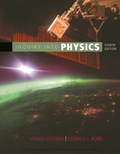
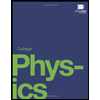 College PhysicsPhysicsISBN:9781938168000Author:Paul Peter Urone, Roger HinrichsPublisher:OpenStax College
College PhysicsPhysicsISBN:9781938168000Author:Paul Peter Urone, Roger HinrichsPublisher:OpenStax College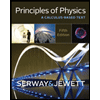 Principles of Physics: A Calculus-Based TextPhysicsISBN:9781133104261Author:Raymond A. Serway, John W. JewettPublisher:Cengage Learning
Principles of Physics: A Calculus-Based TextPhysicsISBN:9781133104261Author:Raymond A. Serway, John W. JewettPublisher:Cengage Learning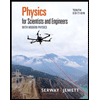 Physics for Scientists and Engineers with Modern ...PhysicsISBN:9781337553292Author:Raymond A. Serway, John W. JewettPublisher:Cengage Learning
Physics for Scientists and Engineers with Modern ...PhysicsISBN:9781337553292Author:Raymond A. Serway, John W. JewettPublisher:Cengage Learning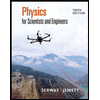 Physics for Scientists and EngineersPhysicsISBN:9781337553278Author:Raymond A. Serway, John W. JewettPublisher:Cengage Learning
Physics for Scientists and EngineersPhysicsISBN:9781337553278Author:Raymond A. Serway, John W. JewettPublisher:Cengage Learning Physics for Scientists and Engineers, Technology ...PhysicsISBN:9781305116399Author:Raymond A. Serway, John W. JewettPublisher:Cengage Learning
Physics for Scientists and Engineers, Technology ...PhysicsISBN:9781305116399Author:Raymond A. Serway, John W. JewettPublisher:Cengage Learning





